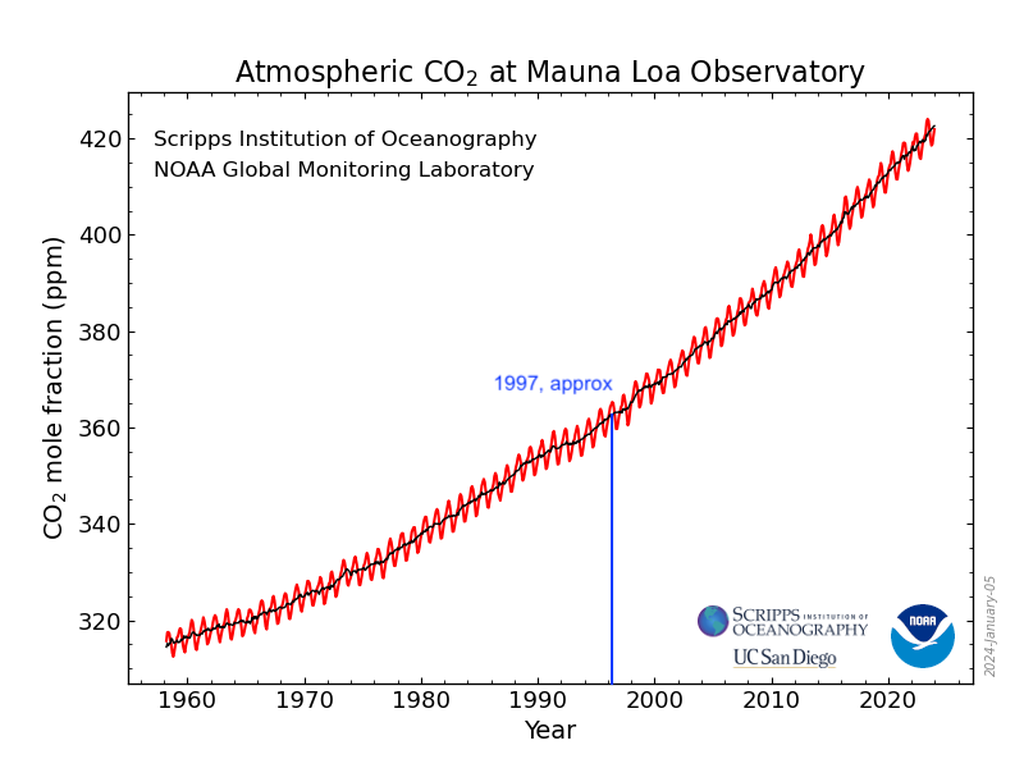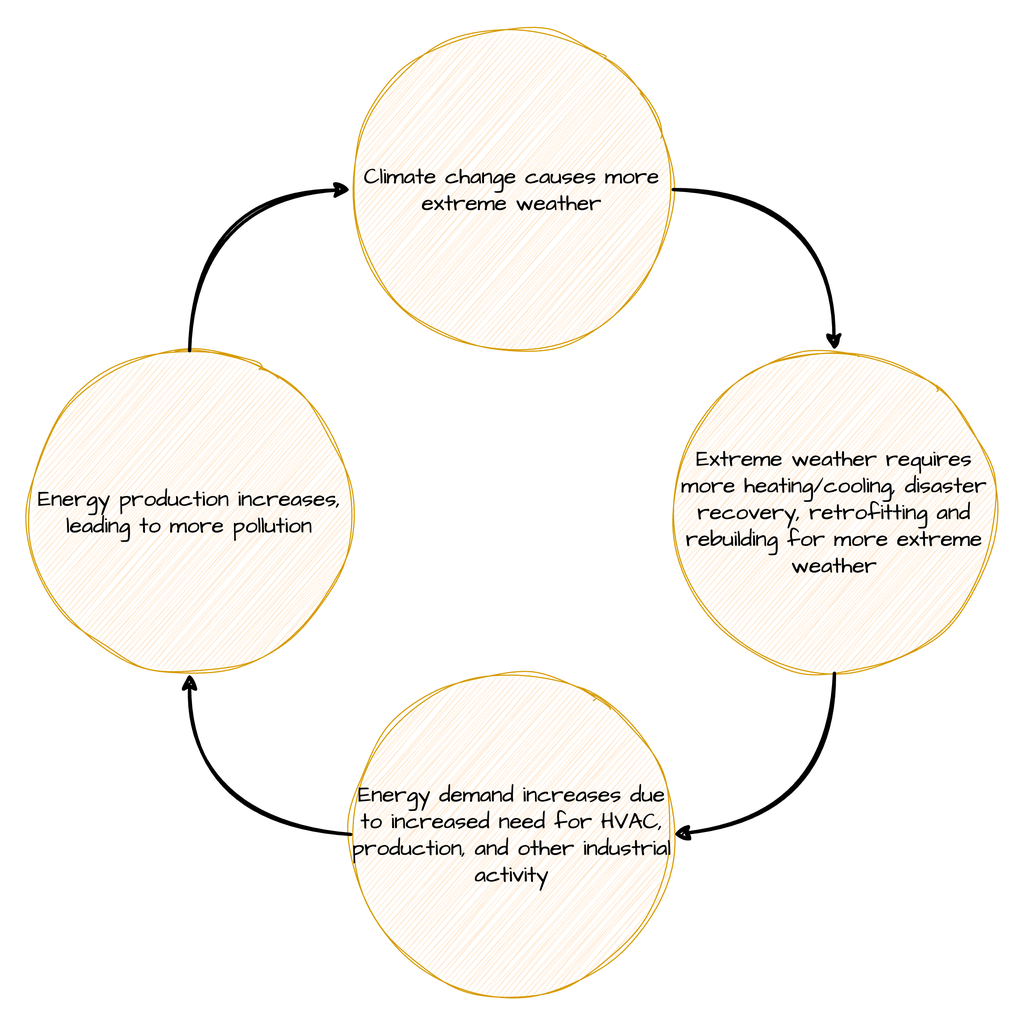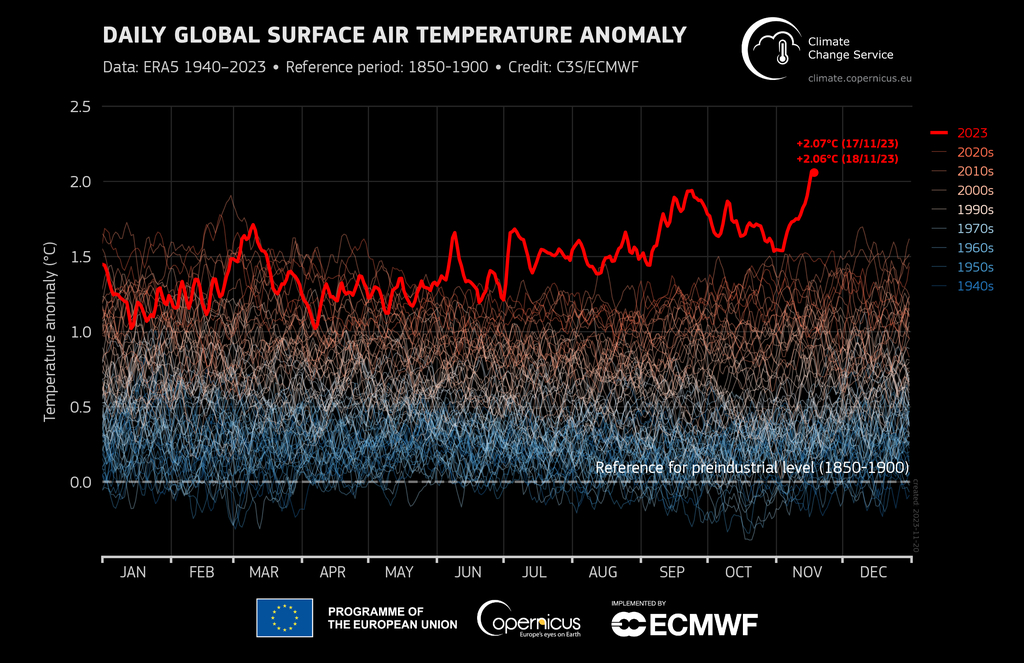Climate Feedback Loops
Table of Contents
If you pay much attention to the mainstream media, you’ve likely heard the phrase “energy transition” thrown around, which alludes to an ongoing global effort to transition away from fossil fuels and move toward so-called “green” energy sources1. As much airtime as this catch-phrase gets, the data reveals a more complex reality about our progress2.
The Kyoto protocol was adopted in 1997, and as the graph below shows, atmospheric CO2 has continued its upward trend. The visualization makes the challenge clear—despite our best intentions, the curve continues to rise.

Subsequent climate treaties have similarly struggled to bend the curve of emissions. While corporate sustainability reports highlight various initiatives, the hard data shows that global fossil fuel extraction continues to increase annually, with pollution accelerating along an exponential curve.
The rise of electric vehicles represents a fascinating case study in energy transitions. While their efficiency is impressive—converting about 60% of electrical energy to power at the wheels compared to 20% for internal combustion engines—their overall impact on emissions has been limited because the energy used to manufacture and charge them often comes from fossil fuel sources. Nevertheless, they represent an important stepping stone toward a cleaner transportation future.
Looking ahead, we might envision reaching a critical mass where renewable energy capacity begins to meaningfully displace fossil fuels. However, this optimistic scenario faces a significant economic challenge known as Jevons paradox: as alternative energy sources reduce overall energy costs, demand tends to increase in response, potentially offsetting efficiency gains.
Feedback Loops #
Climate science has identified numerous interconnected feedback mechanisms that can either amplify or dampen warming trends. These climate feedback loops represent some of the most fascinating and concerning aspects of our climate system, with current research suggesting many will accelerate rather than mitigate warming3.
One particularly interesting feedback loop that receives less attention is what we might call the human-induced carbon climate feedback loop. As climate change progresses, humans require more energy for cooling in hotter regions and adapting to changing conditions. Without proper carbon pricing mechanisms, the most economically attractive option to meet this growing energy demand often remains fossil fuels, creating a self-reinforcing cycle.

Breaking this cycle would require effective carbon pricing—essentially assigning the true cost of carbon emissions to those who produce them. The hesitation to implement robust carbon taxes stems from legitimate economic concerns, as such policies would likely slow short-term economic growth. However, the potential long-term economic benefits of averting severe climate impacts could far outweigh these costs.
Beyond 1.5°C #
The goal of limiting warming to 1.5°C above pre-industrial levels, celebrated during the Paris Agreement, faces increasing challenges as we’ve already observed temperatures exceeding 2°C on some days4. This doesn’t mean all is lost, but it does require an honest reassessment of our climate objectives and adaptation strategies.

A warming world of 2°C or beyond presents significant challenges for ecosystems and human societies alike. For a thought-provoking exploration of these possible futures, I recommend The Ministry for the Future, which offers both sobering scenarios and imaginative solutions.
Recent years have shown concerning temperature trends. In 2023-2024, we observed statistical anomalies reaching 6 sigma deviations from historical means5—essentially events so rare they shouldn’t occur in our lifetime by chance alone. Both sea surface6 and air temperatures7 have shown remarkable deviations, particularly in the North Atlantic. While El Niño has contributed to these spikes, these patterns align with predictions from climate models that incorporate feedback mechanisms.
Moving Forward #
The climate challenge is formidable but not without pathways forward. Individual and collective action both matter in this critical decade:
Political engagement: Support candidates who advocate for meaningful climate policies, particularly carbon pricing mechanisms that correctly assign costs to emissions.
Technological innovation: Remarkable progress continues in renewable energy, battery storage, and carbon capture technologies, with costs falling dramatically over the past decade.
Community resilience: Many communities worldwide are developing innovative approaches to climate adaptation while improving quality of life through urban greening, walkable cities, and local food systems.
Business transformation: Companies increasingly recognize that sustainability represents both a moral imperative and a business opportunity, with significant investment flowing toward climate solutions.
The path ahead requires both pragmatism about our current trajectory and optimism about our capacity for transformative change. By understanding feedback loops—both environmental and human—we can design more effective interventions that accelerate positive change while breaking harmful cycles.
There’s much debate about how green green energy is. As it currently stands, a great deal of pollution is generated by the extraction of raw materials, production, transportation, and installation of wind, solar, and nuclear power sources. Theoretically, solar and wind could eventually meet the base load requirements, but there’s no evidence in the data we have that this is happening at any significant scale. ↩︎
https://commons.wikimedia.org/wiki/File:20220726_Feedbacks_affecting_global_warming_and_climate_change_-_block_diagram.svg ↩︎
https://climate.copernicus.eu/global-temperature-exceeds-2degc-above-pre-industrial-average-17-november ↩︎
https://twitter.com/EliotJacobson/status/1721560657831895437 ↩︎
